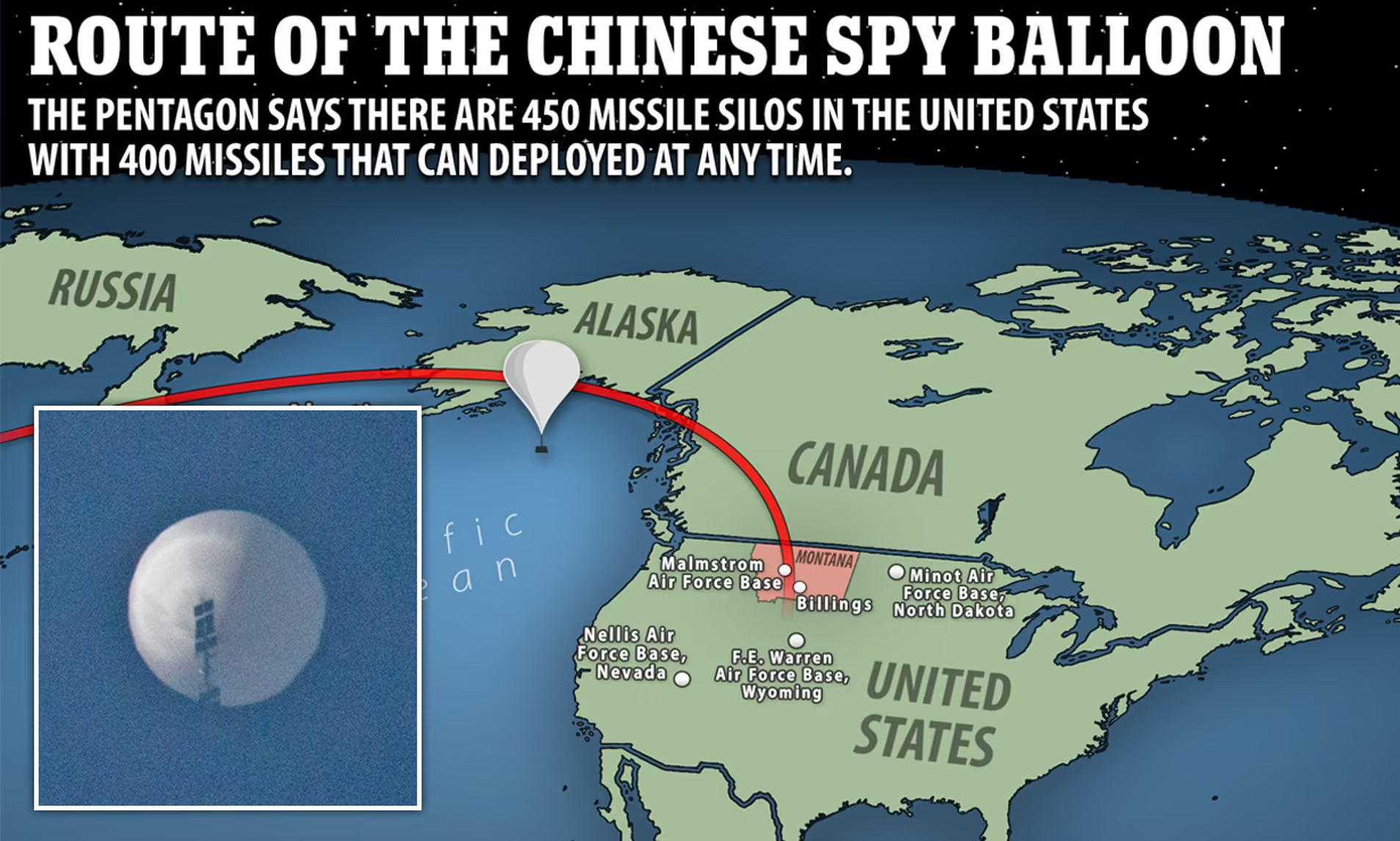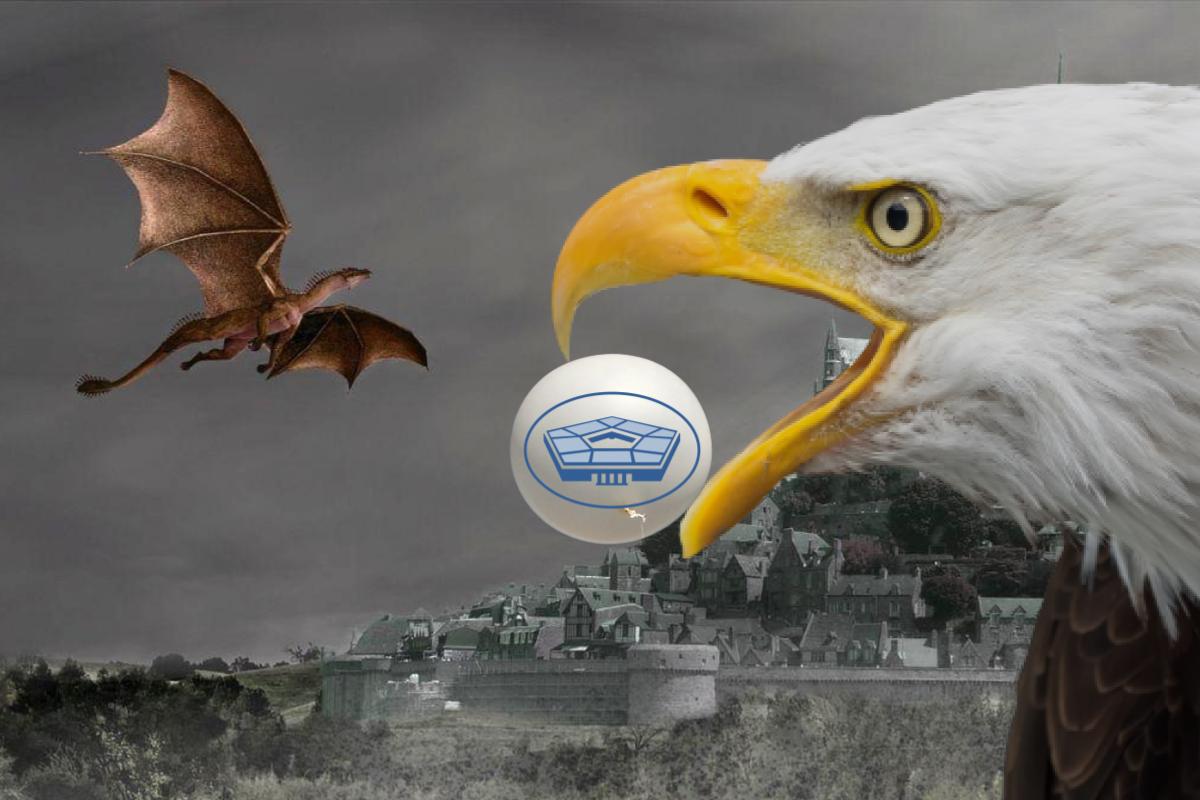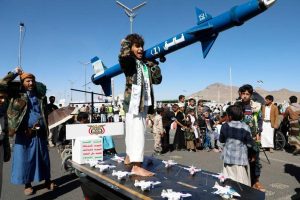Senior Defense Official Holds a Background Briefing on High-Altitude Surveillance Balloon
HLS.Today Pentagon Report
BRIGADIER GENERAL PAT RYDER: Good evening, everyone. Brigadier General Pat Ryder here, the Pentagon press secretary. So thank you very much for joining us a little bit later in the day. I’m going to go over a couple of ground rules first. I’ll provide you then with an on-the-record statement. And then I’ll turn it over to our senior defense official.
So first, I’m going to read you an on-the-record statement. This is from Brigadier General Pat Ryder, Pentagon press secretary.
“The United States government has detected and is tracking a high-altitude surveillance balloon that is over the continental United States right now. The U.S. government, to include NORAD, continues to track and monitor it closely. The balloon is currently traveling at an altitude well above commercial air traffic, and does not present a military or physical threat to people on the ground. Instances of this kind of balloon activity have been observed previously over the past several years. Once the balloon was detected, the U.S. government acted immediately to protect against the collection of sensitive information.”
STAFF: And with that, we’ll go ahead now and revert to on-background. And you can attribute this to a senior defense official.
SENIOR DEFENSE OFFICIAL: Thanks, Pat.
Hey, everybody. Thanks for joining us late. So a couple of things up top, and then happy to take a few questions. I’ll let Pat moderate on that. But so a few things.
First, we are confident that this high-altitude surveillance balloon belongs to the PRC. As was said at the top, instances of this activity have been observed over the past several years, including prior to this administration. In this instance, President Biden was briefed and asked for military options.
Secretary Austin convened senior DoD leadership yesterday, even as he was on the road in the Philippines. It was the strong recommendation by the Chairman of the Joint Chiefs, General Milley, and the commander of NORTHCOM, General VanHerck, not to take kinetic action due to the risk to safety and security of people on the ground from the possible debris field.

Currently we assess that this balloon has limited additive value from an intelligence collection perspective. But we are taking steps, nevertheless, to protect against foreign intelligence collection of sensitive information.
We are also tracking what abilities it could have in gaining insights, and continue to monitor the balloon as it is over the continental United States.
And so with that, let me pause and I’ll take your questions.
Pat, you want to run the show?
STAFF: Yes, sir. Thank you.
All right, first we’ll go to Tara Copp, Associated Press.
Q: Hey, thanks for doing this. A couple of questions about the balloon itself. Can you give us a sense of how big is it? Is it as big as a car? Big as a bus? Did that factor into the decision not to shoot it down? And, I guess, third on the balloon, when did you first start tracking it? Was it before it crossed into the continental United States?
SENIOR DEFENSE OFFICIAL: Yes, good questions. So how big? You know, I’m not going to go into the exact dimensions. We did assess that it was large enough to cause damage from the debris field if we downed it over an area. We had been looking at whether there was an option yesterday over some sparsely populated areas in Montana. But we just couldn’t buy down the risk enough to feel comfortable recommending shooting it down yesterday.
So, beyond that, though, I can’t really go into the dimensions. But there have been reports of pilots seeing this thing, even though it’s pretty high up in the sky. So, you know, it’s sizeable.
In terms — and so whether it factored into the decision, it did in the sense that we had to assess what the possible debris field would look like falling from that height. We wanted to, you know, take care that somebody didn’t get hurt or property wasn’t destroyed.
And, I’m sorry, how long have we been tracking it. I’m not going to go into all the details because I don’t want to reveal sensitive information. But I will say we have been tracking it for some time. And we have had custody of it the entire time it has been over U.S. airspace, entered the continental United States airspace a couple of days ago.
Q: And just one last, you know, Montana’s one of the three homes for our siloed nuclear weapons. Was there any concern that the balloon was trying to collect intelligence on those silo fields?
SENIOR DEFENSE OFFICIAL: Yes, so clearly the intent of this balloon is for surveillance. And so the current flight path does carry it over a number of sensitive sites. I’d just say a couple of things.
First, our best assessment at the moment is that whatever the surveillance payload is on this balloon, it does not create significant value added over and above what the PRC is likely able to collect through things like satellites in Low Earth Orbit.
But out of an abundance of caution, we have taken additional mitigation steps. I’m not going to go into what those are. But we know exactly where this balloon is, exactly what it is passing over. And we are taking steps to be extra vigilant so that we can mitigate any foreign intelligence risk.
STAFF: Thank you.
Let’s go to Jen Griffin, FOX.
Q: Thank you very much. What do you think the target of this balloon was? And has this ever happened before that you’ve seen either a Chinese surveillance balloon or another country’s surveillance balloon over the United States, or is this the first time?
SENIOR DEFENSE OFFICIAL: Yes, so, I mean, it is a surveillance balloon. And not to be — I’m not trying to be a wiseguy. But the goal is surveillance. And clearly they’re trying to fly this — this balloon over sensitive sites, one of which was just mentioned, to collect information. As I said, we do not judge that it provides significant value added over and above what they can currently collect in other means. But nevertheless, it’s something we’re watching closely.
Is it the first time. It is not the first time that you had a balloon of this nature cross over the continental United States. It has happened a handful of other times over the past few years, to include before this administration.
It is appearing to hang out for a long period of time this time around, more persistent than in previous instances. So that would be one distinguishing factor. Over.
STAFF: Let’s go to Jeff Schogol, Task & Purpose.
Q: All right, thank you. What makes you believe this is a Chinese spy balloon? And then just for arguments sake, why not blow it up and just take the risk that it hits something on the ground?
SENIOR DEFENSE OFFICIAL: Right. No, I’m not going to go into all the ways in which we know that it’s a PRC balloon. I will just say we have very high confidence that this is a PRC balloon. Very high confidence.
So we do not doubt that this is a PRC balloon. And that is an assessment shared across our intelligence and analytic community. Why not shoot it down? We have to do the risk-reward here. So the first question is does it pose a threat — physical kinetic threat to individuals in the United States or the U.S. Homeland. Our assessment is it does not.
Does it pose a threat to civilian aviation? Our assessment is it does not. Does it pose a significantly enhanced threat on the intelligence side? Our best assessment right now is that it does not. And so given that risk, that profile, we assess that the risk of downing it, even if the probability was low in a sparsely populated area of the debris falling and hurting somebody or damaging property that it wasn’t worth it and that was the recommendation of our military commanders.
That is what we recommended to the White House yesterday.
STAFF: Let’s go to Idrees Ali, Reuters.
Q: Hey, just two quick questions. Firstly, have you directly brought this up with Chinese officials and what has their response been? And in terms of altitude, is this over U.S. airspace or is it sort of in the stratosphere? What’s sort of the height of this right now?
SENIOR DEFENSE OFFICIAL: Yes, both good questions. Good to hear your voice, Idrees. We have engaged PRC officials with urgency through multiple channels. They’ve been engaged both through their embassy here in Washington and through our embassy in Beijing.
We have communicated to them the seriousness with which we take this issue. But beyond that I’m not going to go into the content of the — of the message. But we have made clear we will do whatever is necessary to protect our people and our homeland. And so if the risk profile that I described earlier, if that changes we will have options to deal with this balloon.
In terms of the altitude, I’m not going to go into the exact altitude. What I will say is that it is significantly above where civilian air traffic is active, which is why we do not assess that it’s a threat to civilian aviation. It — but it is in the atmosphere and it is over U.S. airspace. It is not in outer space.
STAFF: OK. Let’s go to Heather Mongilio, USNI.
Q: Thank you so much. You mentioned this is not the first time. Can you say when the last time a similar situation happened?
SENIOR DEFENSE OFFICIAL: I — I’m not going to go into the details of that. It’s happened a few times in recent years to include before this administration. But beyond that I’m not going to go into the details.
STAFF: Got time for just a few more. We’ll go to Dan Lamothe, Washington Post.
Q: Yes, thank you. And can you walk us through how you observed it? NBC News reported that system F-22s were sent up — I don’t if scrambled would be the right terminology there but at least sent up to get a closer look. Thank you.
SENIOR DEFENSE OFFICIAL: Yes, so we’ve been — we’ve been observing it through multiple means, including manned aircraft. You did see reports yesterday of a ground stop at billings airport and the mobilization of a number of assets including F-22s.
The context for that was it would put some things on station in the event that a decision was made to bring this down while it was over Montana. So we wanted to make sure we were coordinating with civil authorities to empty out the air space around that potential area. But even with those protective measures taken it was the judgment of our military commanders that we didn’t drive the risk down low enough, so we didn’t take the shot.
But that’s why you saw the reports that you saw, Dan.
STAFF: And Nancy Youssef, Wall Street Journal.
Q: Thank you. (Inaudible) you mentioned earlier that the balloon stayed for a longer period of time than in the past and that it wasn’t offering any significant intelligence relative to other means of ISR that the Chinese have. My question is, is there any reason to believe that the Chinese wanted this to be spotted. Is there — is that your conclusion?
SENIOR DEFENSE OFFICIAL: You know, I can’t speculate. It’s probably a question better to direct to the Chinese embassy. I don’t know why they did what they did. I will say that the past number of times it did not loiter over the continental United States for an extended period of time. It’s different.
And precisely why they made the decision to make this different I think really is a question for them.
STAFF: And last question, Brandi Vincent, DefenseScoop.
Q: Thank you so much for doing this. Does the balloon appear to have technology that is different or more advanced than any technology that the U.S. has? Does the U.S. have a policy for dealing with balloons like this? I can’t help but think of the 163 balloons that were made sense of in the UAP report. So is this something that you’re developing policy on or does policy exist about how to handle these sort of sightings?
SENIOR DEFENSE OFFICIAL: Yes, you know I’m not going to go into the exact nature of the technology. I don’t think that the — that the pay load on this is — I wouldn’t characterize it as revolutionary. I think the thing that is different is the altitude and of course the willingness to put it over the continental United States for an extended period of time.
I think that’s the — that’s the biggest difference here. As it relates to do we have a policy, the answer is yes, we do and most importantly we also have sufficient authority given to us to take action under Title 10 against unmanned aerial systems of which this balloon would be a part. So we think we have all the authorities we need to do anything that we need to do to protect the American people and we’ll continue to do that.
Q: Thank you.
STAFF: Thank you very much ladies and gentlemen, that’s all the time we have. Just as a reminder the comments are as a senior defense official on background. My comment at the top is on the record and we will post a transcript on defense.gov when it’s available. Thank you for joining us.
(CROSSTALK)
Q: Can you hear me? Hello?
STAFF: Louie ?
Q: Yes. Some of us, you know, since we work in broadcast, recorded the top portion of your briefing since you were on the record. Can we use it for broadcast?
STAFF: You can use that for broadcast.
Q: Thank you.
STAFF: Thank you.
Thank you very much, everybody
SENIOR DEFENSE OFFICIAL: Thanks, everybody.
HLS.Today Source: DEFENSE.GOV







